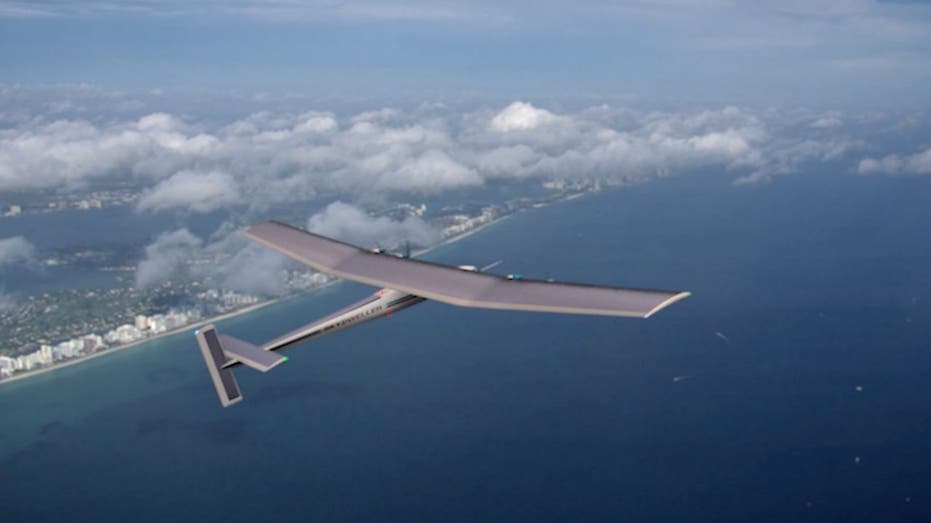
Revolutionizing Flight: Skydweller Aero’s Solar-Powered Aircraft Soars for 22 Hours
Imagine a future where aircraft can stay airborne for weeks or even months without the need for refueling. This is no longer a distant dream but a tangible reality being pursued by Skydweller Aero with its cutting-edge solar-powered airplane.
Breaking Boundaries in Aviation
As the world’s largest unmanned solar-powered aircraft, Skydweller Aero is at the forefront of transforming aviation. Recently, the company reached a remarkable milestone by successfully conducting a series of uncrewed autonomous flight tests. Among these tests, the standout achievement was a flight lasting an impressive 22.5 hours, which took off from the company’s facility at Stennis International Airport in Kiln, Mississippi. This groundbreaking feat underscores the potential of solar energy and battery technology to sustain extended flight durations.
Architectural Excellence: From Solar Impulse to Skydweller
What makes Skydweller distinct from its predecessors is its lineage. The aircraft is built upon the foundation of Solar Impulse, the first solar-powered aircraft to complete a circumnavigation of the globe. This strong heritage equips Skydweller with a robust design, allowing it to carry significant payloads. With a wingspan of 236 feet—larger than a Boeing 747—and a weight of just 5,620 pounds, comparable to that of a Ford F-150, the Skydweller can accommodate up to 800 pounds of payload.
Military Interest and Strategic Applications
The U.S. Navy has shown considerable interest in the capabilities of Skydweller, as highlighted by recent flight tests conducted under a Joint Concept Technology Demonstration. This initiative, managed by the Office of the Undersecretary of Defense for Research and Engineering, aims to assess autonomous maritime patrol aircraft. The Skydweller’s exceptional endurance could revolutionize maritime patrol and surveillance, enhancing national security efforts.
Enhancing Security and Communication
Skydweller Aero’s autonomous solar-powered aircraft is poised to provide continuous surveillance capabilities, significantly improving maritime border security, monitoring illegal fishing activities, and preventing unauthorized operations such as trafficking and smuggling. Its long endurance allows for round-the-clock operations, providing a formidable tool for law enforcement and border control.
In addition to security applications, Skydweller Aero also functions as a non-terrestrial communications platform, offering cost-effective airborne telecom solutions to remote and underserved regions. This capability fosters connectivity in areas that lack reliable communication infrastructure, thereby promoting economic development.
Disaster Response and Environmental Monitoring
In times of crisis, Skydweller’s aircraft can swiftly respond to disasters by providing real-time aerial assessments, communication relays, and tracking for relief operations. Its solar-powered endurance ensures prolonged coverage, complementing existing resources or filling gaps where alternatives may be unavailable or too expensive.
Moreover, the aircraft’s capabilities extend to environmental and scientific research. From climate change monitoring to wildfire assessments and geophysical surveys, Skydweller enables comprehensive data collection across expansive areas, making significant contributions to environmental protection and research initiatives.
A Vision for the Future
While military applications are the primary focus for now, Skydweller Aero also has aspirations in the commercial sector. CEO Robert Miller envisions a future where solar-powered aircraft serve as airborne communication platforms that work alongside satellite networks. He believes these aircraft can enhance low Earth orbit (LEO) satellite communications, providing continuous coverage in targeted regions.
Challenges Ahead
Developing a solar-powered aircraft presents its own set of challenges, as previous attempts by other companies have often faltered. However, Skydweller’s success can be attributed to its team’s extensive expertise in aeroelasticity, which ensures the aircraft can endure the stresses of flight. As CEO Robert Miller puts it, “My team has a lot more experience in aeroelasticity than all the other solar programs combined.”
Conclusion: A New Era in Aviation
As the world’s largest unmanned solar aircraft, Skydweller Aero is not just innovating aviation; it is opening up a realm of exciting possibilities. From bolstering maritime patrols to serving as airborne communication networks, the applications are vast. While challenges remain, the recent successful test flights demonstrate the remarkable advancements in solar aviation technology.
What hurdles do you think lie ahead in the widespread adoption of solar-powered aircraft technology, and how might they be addressed? Share your thoughts and insights.

